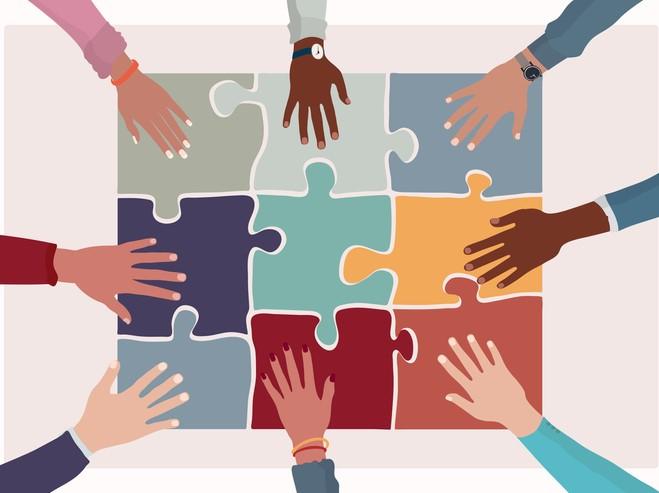
We need systemic change to tackle EDI in education

In recent years, there has been much focus on equity, diversity and inclusion (EDI) needs, and rightly so. Times and associated expectations are rapidly changing, even in the education sector. Classrooms, from primary level right up to higher education, are increasingly diverse, with students from different nationalities, genders, races, sexualities and abilities making up larger cohorts. Student needs have become even more prominent and critical since the pandemic.
But are we actually doing enough, specifically in the higher education space, to really make a difference? Or is it all just bluff, with little action bar sentiment itself?
Tackling discrimination in business and society requires us to change the ways we deal with “difference” in education, from the day a child enters primary school to the day they complete their postgraduate degree. But before we implement approaches to deal with discrimination, and end this altogether, we need to understand the current challenges we actually face in doing so.
The three primary challenges around EDI in education
The first is to facilitate the shift from “equality” to “equity”. For opportunity to be truly equal, the individuals within a system may all require something slightly different, be that support tools, nuanced language, different teaching methods or simply more time. Equality – offering everyone exactly the same in order to “level the playing field” – does not always give people equal opportunity. Needs are going to be different – they need to be acknowledged, measured and responded to accordingly.
The second is to change the narrative around “normal” and “different”. What is “normal” anyway? And what constitutes difference? For the most part, “different” is down to subjective opinion. Perhaps the most important characteristic of being human is our individuality, so the first step is to abandon any preconception of what is “normal”. We need to do the same with “disability” – even swapping this for phrases such as “less able” has negative connotations, which we must abandon. We need to stop thinking in terms of “less ability” and start thinking about “diverse ability” if we are to become truly inclusive and consider intersectionality. Thankfully, the world is opening up more and more to embracing neurodiversity but, as always, there is still progress to be made.
- Making LGBTQ+ individuals feel safe, valued and empowered on campus
- Is it time to rethink social mobility discourse and the meaning of ‘success’?
- I’m finally ready to admit that I’m an academic who suffers from depression
The third challenge is to consciously start teaching inclusivity and countering embedded societal attitudes when children enter the education system, from primary school onwards. If we are to create the necessary integral change in society, we must start here, at the beginning, by acknowledging and challenging the social constructs that perpetuate discrimination (often subliminally) and ensure our education system teaches core values that instil awareness, consideration and respect for others from this early point throughout the entirety of the education landscape.
We must also recognise how far-reaching discrimination can be. We must not only think of the more obvious issues such as race, gender and sexual orientation, but also invisible ones such as dyslexia, neurodivergence and mental health. Inclusivity must encompass “respect for all” in its broadest sense.
So, now that we are aware of the key challenges, how can we tackle them? As with any social movement that seeks to change the status quo, progress cannot be made by one source alone. To have any chance of success the sector needs to work together, from primary education all the way through to university level, start-ups, businesses and even executive education. While there’s no denying that change must come from all levels of education, what can we specifically do in the further and higher education space? There are a number of key steps that can be taken.
Much work has already been done in to address EDI in education, perhaps in part driven by market forces – students are, after all, customers who can vote with their feet – but it’s never enough, and there is a lot more to do strategically and systematically. As our students enter the workplace, it’s crucial they do so as adults who have learned throughout their entire experience of education (including how they themselves have been treated) to have empathy for, and actively listen to, the perspectives and needs of others.
In my role as associate dean for EDI at Imperial College Business School, one of my goals is to embed inclusivity systemically, and make fairness, dignity and respect central values of the school’s identity. While primary and secondary education settings have a responsibility to ensure the right values are embedded as part of everyday learning, in higher education it is more about how we can use those values to drive reactive change management, equipping our students with the skills, vision and support networks to make the industries they go on to work in more inclusive.
This requires a values-driven inclusivity framework and the processes to effect that change. EDI efforts cannot rely on the moral responsibility of selected, self-driven individuals – it needs systemic change focused on processes.
To embrace change, proactively or reactively, we all need to ACT: be aware of differences; show consideration to others; and translate that understanding into daily, conscious behaviours across all aspects of our lives.
Specifically in the higher education sector, for the ACT framework to be embedded we will need our learning and education initiatives to be evidence-based (and not based on archaic stereotypes) and embedded structurally. Inclusivity needs to be a priority principle for redesign of curriculum and pedagogy. The content needs to include cases and research from all parts of the world and from all genders. The faculty who are teaching the students should also be as diverse as possible.
At the Imperial College Business School, we are inviting all students to take a module called “Working in Diverse Organisations” by Maria Farkas, a senior teaching fellow in diversity and inclusion at Imperial. This course is uniquely designed to teach EDI values, from self-awareness to evaluating others based on data rather than biases, along with skills that enable people to stand up for others at work. We expect students graduating from the school to be inclusive leaders ready for the future workforce.
We are all part of a global community, and our core values are what define us – they are what makes life meaningful and more colourful. But we will only be a truly global community if we actively counter the entrenched societal discrimination that still exists by teaching the next generation how to live an inclusive life. It’s a challenge but there’s a real possibility to turn the tide.
Sankalp Chaturvedi is professor of organisational behaviour and leadership and associate dean of equity, diversity and inclusion at Imperial College Business School, London. He is also a co-director of the Gandhi Centre for Inclusive Innovation at the school.
If you would like advice and insight from academics and university staff delivered direct to your inbox each week, sign up for the THE Campus newsletter.


